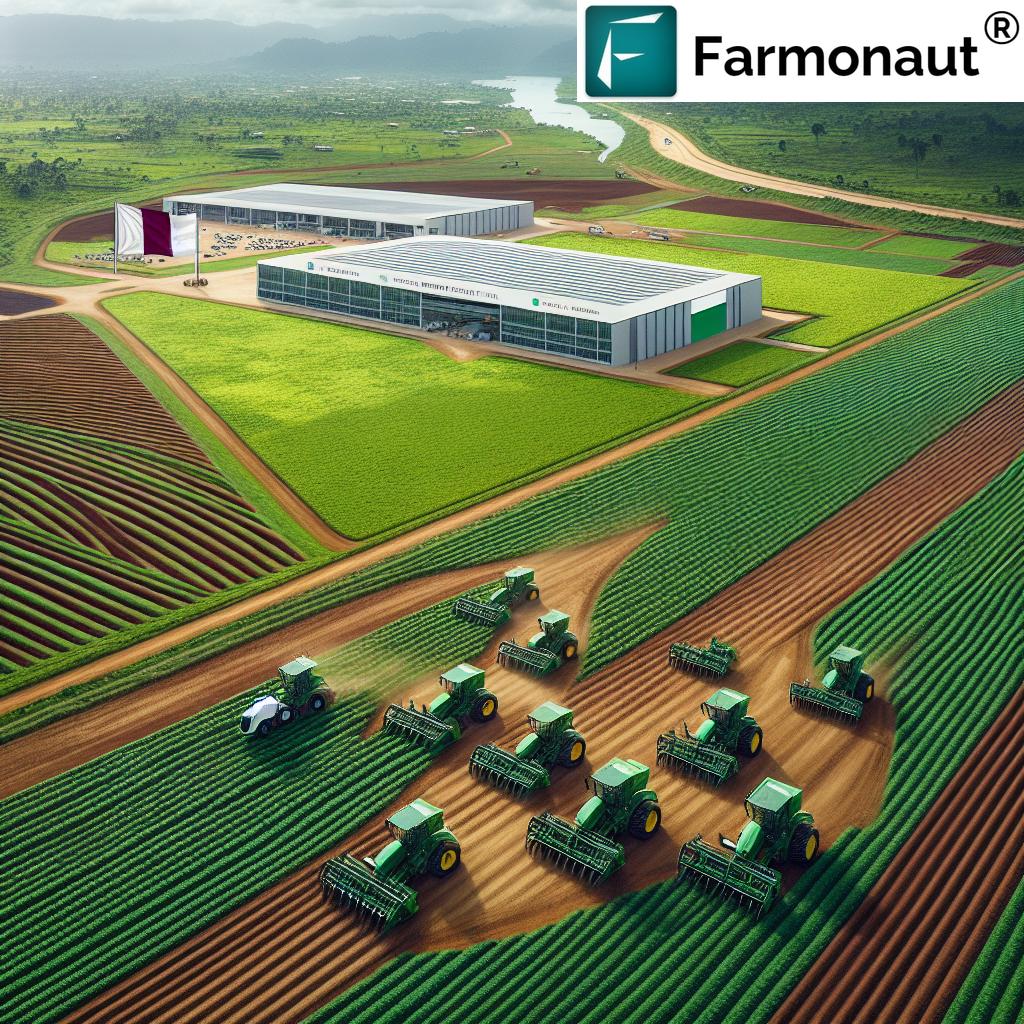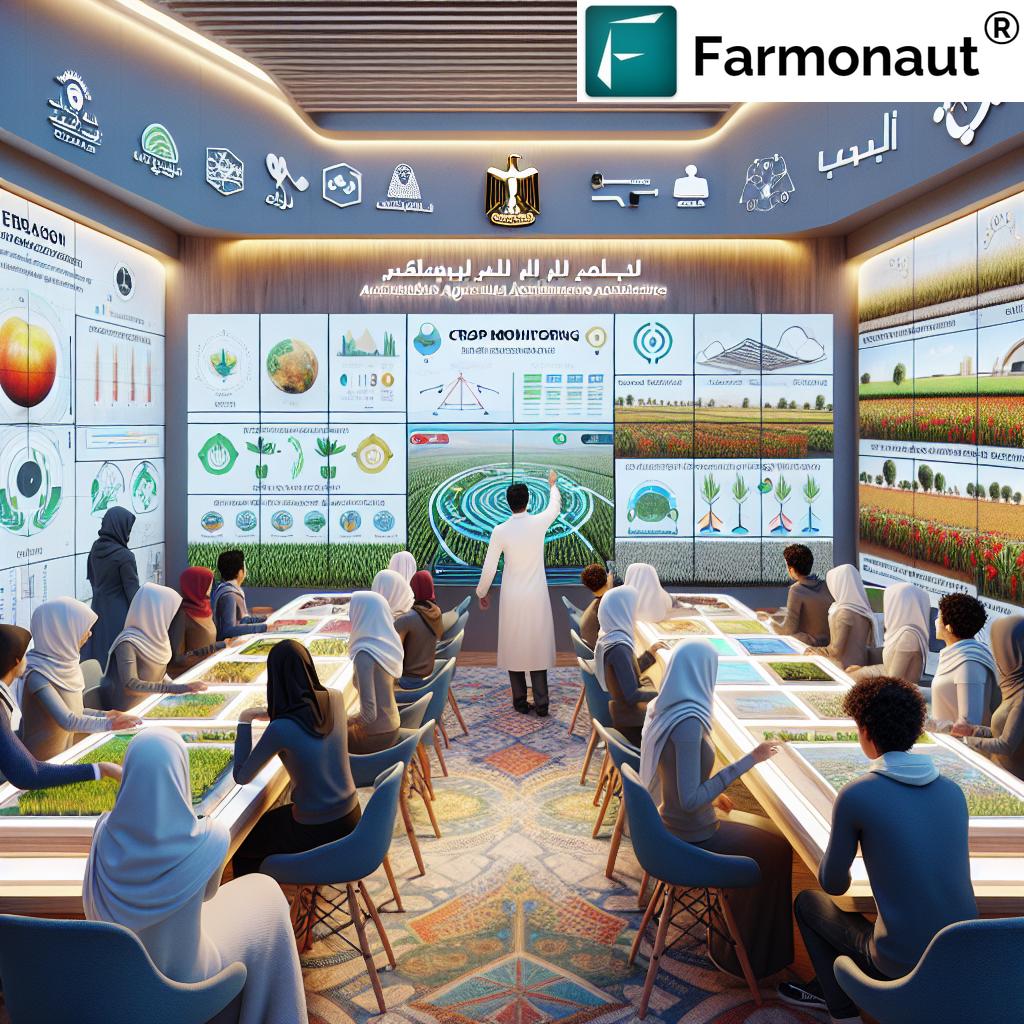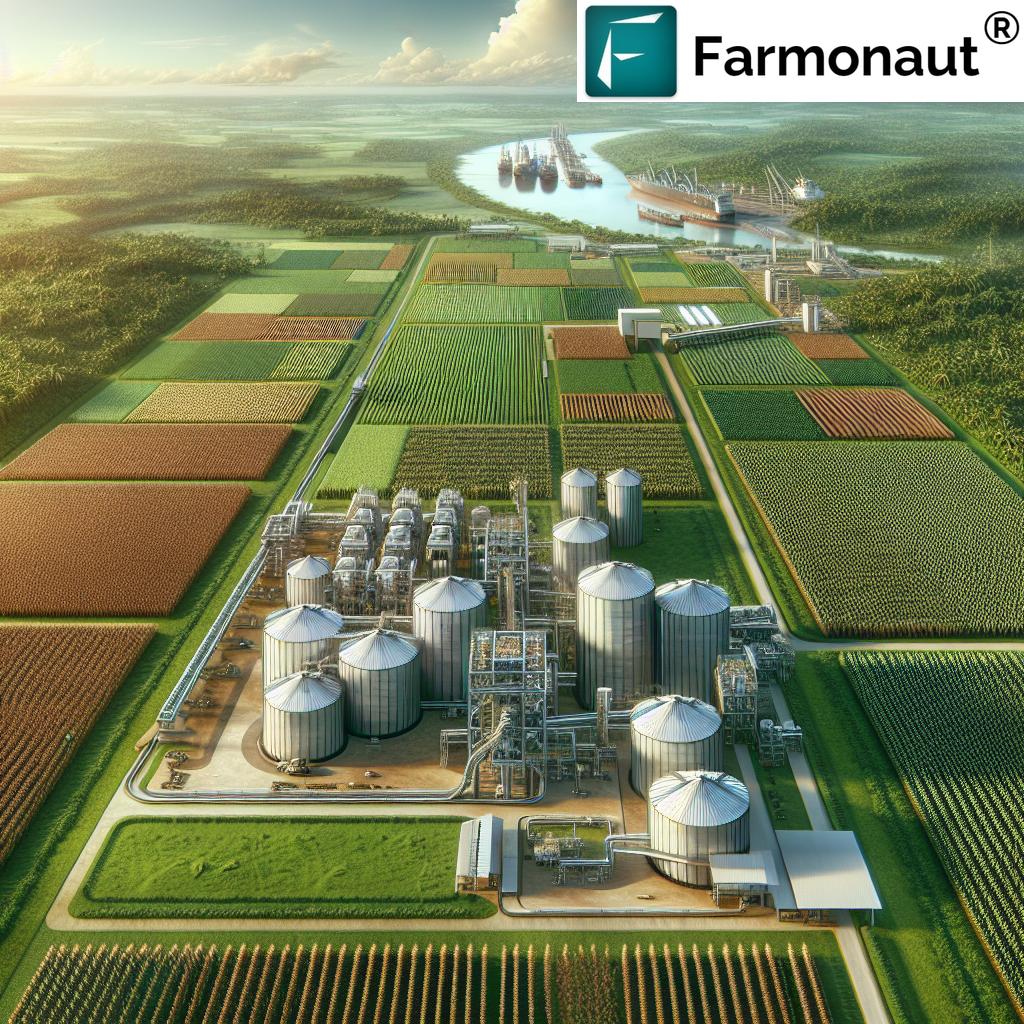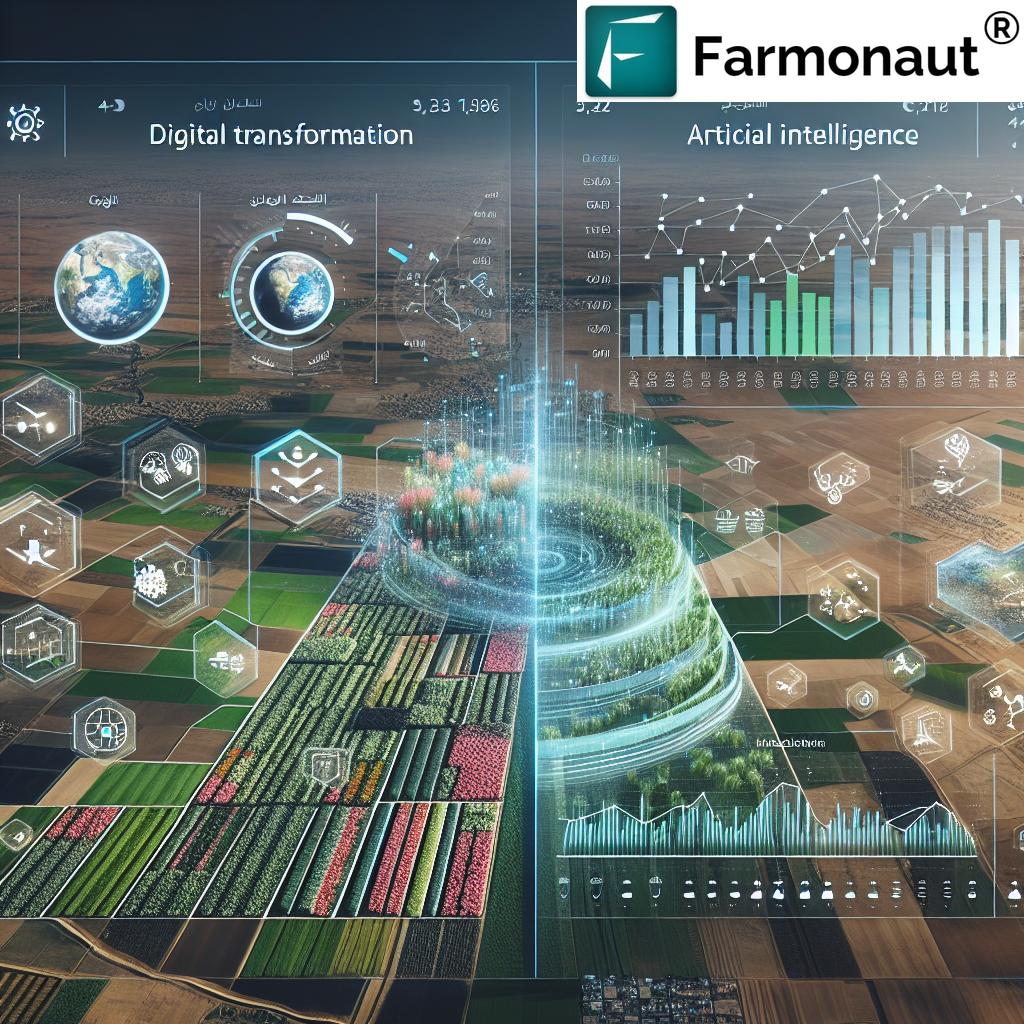Revolutionizing Ethiopian Agriculture: Sustainable Farming and AgriTech Innovation for Economic Growth
“Ethiopia’s agricultural modernization conference in Addis Ababa explored partnerships with China’s Jiangsu province, targeting economic growth through sustainable farming.”
In a significant step towards revolutionizing agriculture and fostering economic growth, Ethiopia recently hosted a groundbreaking conference in Addis Ababa. This event brought together key stakeholders from Ethiopia and China’s Jiangsu province, focusing on sustainable agriculture in Africa and agricultural modernization as pivotal drivers for economic development. As we delve into the outcomes and implications of this conference, we’ll explore how these initiatives could shape the future of farming and economic prosperity in Ethiopia.
The Ethiopia-China Agricultural Partnership: A New Era of Cooperation
The conference in Addis Ababa marked a milestone in the ongoing partnership between Ethiopia and China, particularly with Jiangsu province. This collaboration aims to enhance economic and trade cooperation, with a strong emphasis on agricultural development. Notable attendees included Ethiopia’s Finance Minister Ahmed Shide, Foreign Affairs State Minister Mesganu Arga, Chinese Ambassador to Ethiopia Chen Hai, and Jiangsu Province Governor Xu Kunlin.
During the event, Finance Minister Shide highlighted the significance of this conference as a testament to the strong partnership between Ethiopia and China. He emphasized their shared commitment to mutual respect and growth, noting China’s position as one of Ethiopia’s largest trading partners. Shide also detailed Jiangsu’s advanced economic and technological capabilities, which could facilitate collaborative opportunities in investment, agriculture, and technology.

Agritech Investment Opportunities and Smart Farming Solutions
One of the key focuses of the conference was exploring agritech investment opportunities and smart farming solutions. These innovative approaches have the potential to transform Ethiopian agriculture, making it more efficient, productive, and sustainable. Let’s examine some of the cutting-edge technologies and solutions discussed:
- Precision Farming Technology: This advanced approach uses data-driven insights to optimize crop yields and resource use. By leveraging technologies like satellite imagery and IoT sensors, farmers can make more informed decisions about planting, irrigation, and harvesting.
- Crop Monitoring Technology: Real-time monitoring of crop health and growth stages allows for timely interventions, reducing crop losses and improving overall productivity.
- Smart Irrigation Systems: These systems use weather data and soil moisture sensors to optimize water usage, crucial in water-scarce regions of Ethiopia.
- AI-powered Pest Management: Artificial intelligence can help predict and identify pest outbreaks, allowing for targeted and efficient pest control measures.
To support these technological advancements, we at Farmonaut offer a range of solutions that align perfectly with Ethiopia’s agricultural modernization goals. Our satellite-based crop health monitoring system provides farmers with valuable insights into vegetation health (NDVI) and soil moisture levels. This data-driven approach enables farmers to make informed decisions about irrigation, fertilizer usage, and pest management, ultimately optimizing crop yields and reducing resource wastage.
Explore our innovative agricultural solutions: 
Sustainable Farming Practices for Inclusive Growth
The conference emphasized the importance of sustainable farming practices for inclusive growth in Ethiopia. This approach not only aims to increase agricultural productivity but also ensures long-term environmental sustainability and social equity. Some key sustainable farming practices highlighted include:
- Conservation Agriculture: Minimizing soil disturbance, maintaining soil cover, and crop rotation to improve soil health and water retention.
- Agroforestry: Integrating trees and shrubs into croplands and pastures to enhance biodiversity and soil fertility.
- Integrated Pest Management: Using a combination of biological, cultural, and chemical methods to control pests while minimizing environmental impact.
- Water Conservation Techniques: Implementing rainwater harvesting and efficient irrigation systems to maximize water use efficiency.
These practices align with Farmonaut’s mission to promote sustainable agriculture. Our Jeevn AI Advisory System delivers real-time insights, weather forecasts, and expert crop management strategies to farmers, helping them implement these sustainable practices effectively.
The Blue Economy: A New Frontier for Agricultural Growth
An intriguing aspect of the conference was the discussion on the blue economy and its potential role in Ethiopia’s agricultural sector. The blue economy concept focuses on the sustainable use of ocean resources for economic growth, improved livelihoods, and jobs while preserving the health of the ocean ecosystem. For Ethiopia, this could translate to:
- Sustainable Aquaculture: Developing fish farming in lakes and rivers to supplement protein sources and create new economic opportunities.
- Water Resource Management: Implementing integrated water resource management strategies to support agriculture while preserving aquatic ecosystems.
- Eco-tourism: Promoting sustainable tourism around water bodies, creating additional income streams for rural communities.
While Ethiopia is landlocked, its numerous lakes and rivers offer significant potential for blue economy initiatives. These efforts could complement traditional agriculture, diversifying income sources for rural communities and enhancing food security.
“Precision farming and crop monitoring technologies were key focuses at Ethiopia’s agritech conference, aiming to boost agricultural innovation and rural development.”
Advancing Rural Development Through Agricultural Innovation
A crucial aspect of Ethiopia’s agricultural modernization strategy is its focus on rural development. The conference highlighted how agricultural innovation could be a catalyst for transforming rural areas, creating new opportunities and improving livelihoods. Key points discussed included:
- Digital Literacy Programs: Initiatives to enhance digital skills among rural farmers, enabling them to leverage agritech solutions effectively.
- Rural Infrastructure Development: Improving roads, storage facilities, and internet connectivity to support the adoption of modern farming techniques.
- Agricultural Extension Services: Enhancing the reach and effectiveness of extension services through digital platforms and mobile applications.
- Value Chain Development: Creating opportunities for rural communities to participate in value-added activities beyond primary production.
At Farmonaut, we recognize the importance of making advanced agricultural technologies accessible to rural farmers. Our platform is designed to be user-friendly and accessible through mobile devices, ensuring that even smallholder farmers in remote areas can benefit from precision farming techniques.
Download our mobile apps for on-the-go farm management:
Comparing Traditional and Precision Farming in Ethiopia
To better understand the potential impact of agricultural modernization in Ethiopia, let’s compare traditional farming methods with precision farming techniques being introduced through the Ethiopia-China cooperation:
| Aspect | Traditional Farming | Precision Farming |
|---|---|---|
| Crop Yield (estimated tons/hectare) | 2-3 | 4-6 |
| Water Usage (estimated liters/hectare) | 8,000-10,000 | 5,000-7,000 |
| Fertilizer Efficiency (estimated percentage) | 40-50% | 70-80% |
| Pest Management | Reactive, broad-spectrum applications | Proactive, targeted treatments |
| Labor Requirements (estimated person-hours/hectare) | 200-250 | 100-150 |
| Environmental Impact | Higher resource use, potential for overuse of chemicals | Reduced resource use, minimized chemical application |
| Initial Investment Costs (estimated USD) | 500-1,000 | 2,000-5,000 |
| Long-term Profitability (estimated percentage increase) | Baseline | 30-50% increase |
This comparison clearly illustrates the potential benefits of adopting precision farming technologies in Ethiopian agriculture. While the initial investment may be higher, the long-term benefits in terms of increased yields, resource efficiency, and profitability are significant.

The Role of Technology in Enhancing Agricultural Economic Growth
The conference in Addis Ababa highlighted the critical role of technology in driving agricultural economic growth. By leveraging advanced technologies, Ethiopia aims to transform its agricultural sector, making it more productive, resilient, and competitive in the global market. Some key technological innovations discussed include:
- Blockchain for Supply Chain Transparency: Implementing blockchain technology to enhance traceability and reduce fraud in agricultural supply chains.
- Big Data Analytics: Utilizing large-scale data analysis to predict market trends, optimize crop selection, and improve overall farm management.
- Drone Technology: Using drones for crop monitoring, precision spraying, and mapping to enhance efficiency and reduce labor costs.
- IoT Sensors: Deploying Internet of Things (IoT) sensors to monitor soil conditions, weather patterns, and crop growth in real-time.
At Farmonaut, we’re at the forefront of these technological advancements. Our platform integrates satellite imagery, artificial intelligence, and machine learning to provide farmers with actionable insights. For instance, our blockchain-based traceability solution ensures transparency in agricultural supply chains, building trust and reducing fraud.
Explore our API for integrating advanced agricultural data into your systems: Farmonaut API
For developers looking to leverage our technology: API Developer Docs
Enhancing Trade Cooperation and Investment Opportunities
A significant focus of the conference was on enhancing trade cooperation between Ethiopia and China’s Jiangsu province. This collaboration opens up new investment opportunities, particularly in the agricultural sector. Key areas of potential investment include:
- Agro-processing Facilities: Establishing modern processing plants to add value to agricultural products before export.
- Cold Chain Infrastructure: Investing in cold storage and transportation facilities to reduce post-harvest losses and improve food quality.
- Agricultural Research and Development: Setting up joint research facilities to develop crop varieties suited to Ethiopian conditions.
- Agricultural Machinery: Importing and potentially manufacturing advanced farming equipment tailored to Ethiopian needs.
These investment opportunities not only promise economic returns but also contribute to the overall modernization of Ethiopia’s agricultural sector. By bringing in advanced technologies and know-how, such investments can accelerate the adoption of precision farming techniques and sustainable agricultural practices.
The Impact of Economic Reforms on Agricultural Investment
Ethiopia’s ongoing economic reforms play a crucial role in attracting foreign investors, particularly in agriculture and related sectors. These reforms aim to create a more favorable business environment and include:
- Liberalization of Key Sectors: Opening up previously state-controlled sectors to private investment.
- Improved Regulatory Framework: Streamlining business registration and licensing processes.
- Foreign Exchange Reforms: Measures to improve access to foreign currency for investors.
- Infrastructure Development: Ongoing projects to enhance transportation and logistics networks.
These reforms are particularly relevant to the agricultural sector, as they facilitate easier entry for foreign agribusinesses and technology providers. This influx of investment and expertise is expected to accelerate the adoption of modern farming techniques and technologies across Ethiopia.
The Future of Ethiopian Agriculture: Challenges and Opportunities
As Ethiopia embarks on this journey of agricultural modernization, it faces both challenges and opportunities. Some key considerations for the future include:
- Climate Change Adaptation: Developing resilient farming systems that can withstand changing weather patterns and extreme events.
- Smallholder Integration: Ensuring that smallholder farmers, who form the backbone of Ethiopian agriculture, are not left behind in the modernization process.
- Skill Development: Bridging the knowledge gap to enable farmers and agricultural workers to effectively use new technologies.
- Sustainable Resource Management: Balancing increased productivity with the need to preserve natural resources for future generations.
Addressing these challenges will be crucial for the long-term success of Ethiopia’s agricultural modernization efforts. It will require a concerted effort from government, private sector, and international partners to create a sustainable and inclusive agricultural sector.
Farmonaut’s Role in Ethiopia’s Agricultural Transformation
As a leading provider of agricultural technology solutions, Farmonaut is well-positioned to contribute to Ethiopia’s agricultural transformation. Our suite of tools and services aligns perfectly with the country’s goals of modernizing its farming practices and boosting productivity. Here’s how Farmonaut can support Ethiopia’s agricultural sector:
- Affordable Precision Agriculture: Our satellite-based crop monitoring system makes precision farming accessible to farmers of all scales, democratizing access to advanced agricultural technologies.
- Data-Driven Decision Making: By providing real-time insights on crop health, soil moisture, and weather patterns, we empower Ethiopian farmers to make informed decisions that optimize their resources and improve yields.
- Sustainable Farming Practices: Our platform promotes sustainable agriculture by enabling efficient resource use and providing tools for carbon footprint tracking.
- Supply Chain Transparency: Our blockchain-based traceability solution can enhance trust and transparency in Ethiopia’s agricultural supply chains, potentially boosting the country’s agricultural exports.
- Support for Financial Inclusion: By providing satellite-based verification for crop loans and insurance, we can help improve access to financing for Ethiopian farmers.
Through these solutions, Farmonaut aims to play a pivotal role in Ethiopia’s journey towards a more productive, sustainable, and technologically advanced agricultural sector.
Conclusion: A New Chapter in Ethiopian Agriculture
The recent conference in Addis Ababa marks the beginning of a new chapter in Ethiopian agriculture. By embracing sustainable farming practices, leveraging agritech innovations, and fostering international cooperation, Ethiopia is poised to transform its agricultural sector into a powerful engine for economic growth.
As we’ve explored throughout this article, the path forward involves a delicate balance of technological adoption, sustainable practices, and inclusive development. The collaboration between Ethiopia and China’s Jiangsu province opens up exciting possibilities for knowledge exchange, investment, and innovation in agriculture.
At Farmonaut, we’re excited to be part of this transformative journey. Our advanced agricultural solutions align perfectly with Ethiopia’s goals of modernizing its farming practices and boosting productivity. We look forward to contributing to Ethiopia’s agricultural revolution, helping to create a more prosperous and sustainable future for farmers across the country.
FAQs
- Q: What were the main focuses of the agricultural conference in Addis Ababa?
A: The conference focused on sustainable agriculture in Africa, agricultural modernization, enhancing trade cooperation between Ethiopia and China’s Jiangsu province, exploring agritech investment opportunities, and discussing precision farming and crop monitoring technologies. - Q: How can precision farming benefit Ethiopian agriculture?
A: Precision farming can increase crop yields, improve resource efficiency (water, fertilizers), reduce environmental impact, and ultimately increase profitability for farmers. - Q: What role does the blue economy play in Ethiopia’s agricultural development?
A: The blue economy concept focuses on sustainable use of water resources, which for Ethiopia could include developing sustainable aquaculture, improving water resource management, and promoting eco-tourism around water bodies. - Q: How is Ethiopia’s government supporting agricultural modernization?
A: The government is implementing economic reforms to attract foreign investors, particularly in agriculture and related sectors. This includes liberalizing key sectors, improving the regulatory framework, and developing infrastructure. - Q: What are some challenges facing Ethiopia’s agricultural modernization efforts?
A: Key challenges include adapting to climate change, integrating smallholder farmers into modern agricultural systems, developing necessary skills among farmers, and managing natural resources sustainably.
Explore Farmonaut’s Agricultural Solutions
Ready to revolutionize your farming practices? Discover how Farmonaut’s advanced agricultural technologies can help you optimize your crop yields, reduce resource wastage, and increase profitability. Our solutions are designed to make precision agriculture accessible and affordable for farmers of all scales.
Join us in shaping the future of agriculture. Together, we can create a more sustainable and prosperous farming sector for Ethiopia and beyond.



















